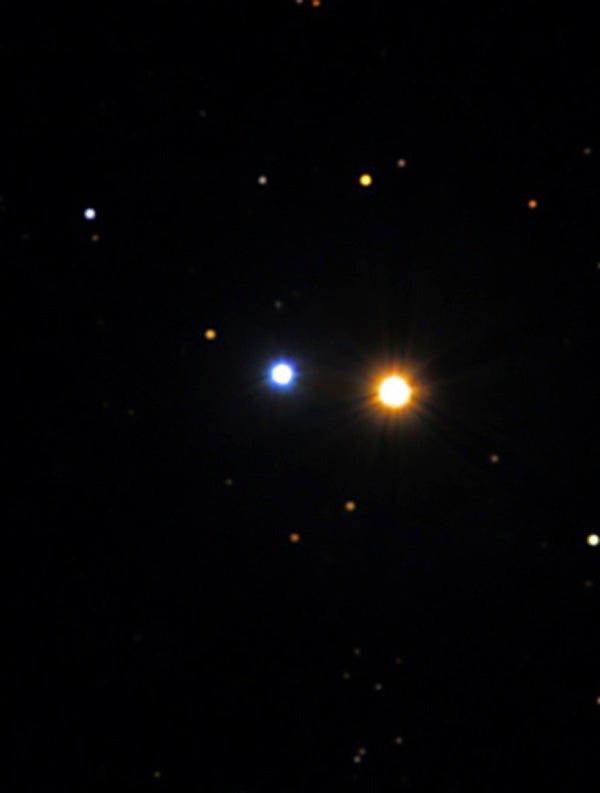One of the sky’s finest binary stars for backyard scopes, Albireo (Beta [β] Cygni) marks the head of Cygnus the Swan, making it easy to find on summer and autumn nights.
It may look like just another star to the naked eye, but aim a telescope its way and it becomes clear why Albireo is considered a supreme showpiece for small scopes. There, set against a glorious Milky Way field, we find the brighter star, golden 3rd-magnitude Albireo A, attended by sapphire-blue 5th-magnitude Albireo B. The color contrast is dazzling. They appear separated by 35″, which makes them resolvable even in steadily held 10x binoculars.
Albireo A, the system’s primary star, is a bright spectral class K helium-fusing giant. It’s about 50 times larger in diameter than our Sun, and contains some five times the mass. Although its luminosity is 950 times greater than the Sun’s, its surface temperature is slightly lower at 7,500 degrees Fahrenheit (4,150 degrees Celsius).
Albireo B, meanwhile, is a class B hydrogen-fusing main sequence star with a sweltering surface temperature of 21,300 F (11,800 C). It’s using up its hydrogen fuel quickly, producing a luminosity 190 times greater than that of the Sun. Because Albireo B is 3.3 times more massive than the Sun, its lifespan will also be shorter than our own star’s.
When the famous double-star observer F.G.W. Struve first examined Albireo in 1832, he measured the apparent distance to the blue companion star from Albireo A as 34″. The stars have changed little since. This has led some to debate whether they form a genuine binary system or are just a chance line-of-sight optical double star. If they do form a physical pair, then Albireo B must be at least 4,400 astronomical units (AU; 1 AU is the average Earth-Sun distance) from Albireo A. At such a tremendous distance, its orbital period would have to be at least 100,000 years.
Research has also uncovered that Albireo is actually a triple-star system. Gleaming Albireo A is accompanied by another blue star separated by only 0.4″ and referred to as Albireo Ac.
Make sure to explore Astronomy’s full list of 101 cosmic objects you must see. New entries will be added each week throughout 2022.
To get the latest astronomical news and observing content delivered directly to your door, subscribe to Astronomy magazine today!










